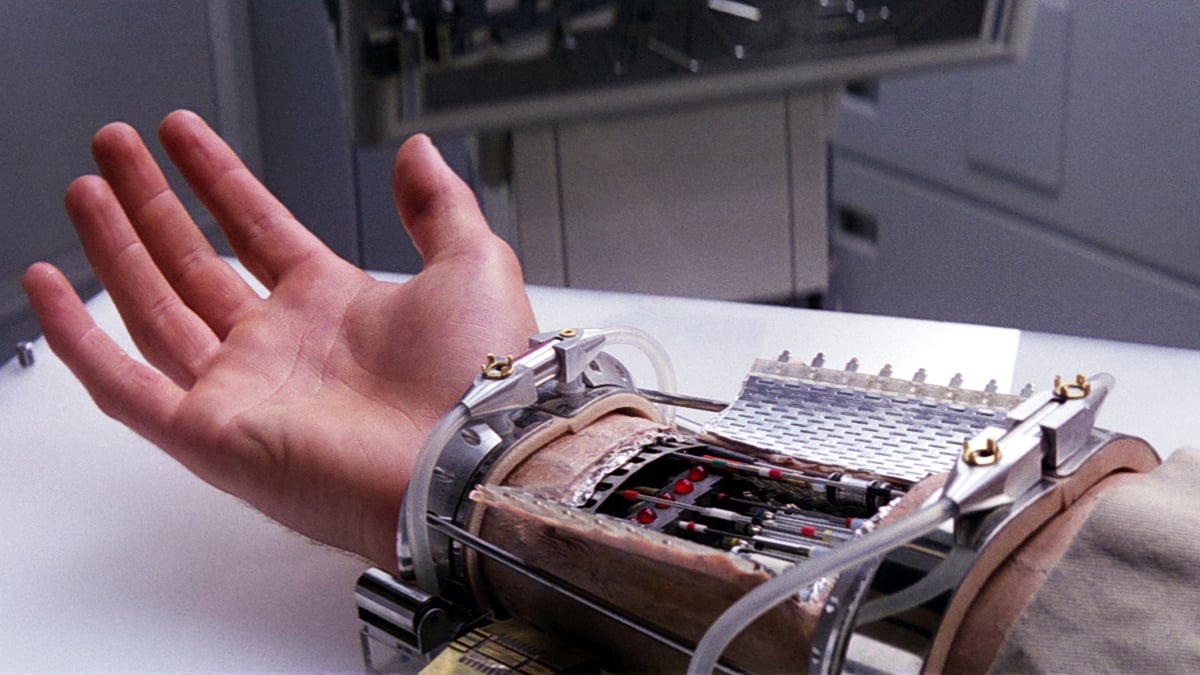Last Updated on June 23, 2022 by Laura Turner
Image courtesy of Lucasfilm.
A long time ago in a galaxy far, far away, medical care looked a little different from what we see today. However, the vision of healthcare that George Lucas created in his Star Wars universe has influenced how technology has developed here on Earth. In honor of Star Wars day (May 4th), let’s take a look at some of the healthcare technology seen in the Star Wars universe and how it has influenced what we see in modern hospitals and health care settings today.
Robotic Arms
Getting your sword arm chopped off in a lightsaber battle is a family tradition for the Skywalkers. Both Anakin and Luke Skywalker lost their right hands and had them replaced with a robotic arm that provided them with the sensation of touch as well as major motor functionality.
Mobius Bionics and the University of Utah created a real life version of this robotic arm. The Life Under Kinetic Evolution Arm, or LUKE arm, is an artificial arm that allows users to perform delicate tasks like handling an egg and peeling a banana by thinking about it. Sensors in the mechanical hand feed impulses via an implant to the nerves in the remaining arm. The arm then responds to the user’s thoughts with movements.(1)
The LUKE arm is commercially available now with healthcare referral in shoulder, humeral, and radial configurations.
Droid Medics
In the Skywalker saga, droids medics (along with human physicians) take care of the heroes as they battle the forces of the Empire and First Order. They do everything from taking care of serious injuries to delivering babies.
Our world uses robots in medical settings as well.
Surgical robots, such as the da Vinci surgical system, allow surgeons to perform with greater precision and require smaller incisions. In a robotic surgery, the surgeon controls robotic arms with a remote manipulator or a computer. Common robot-assisted surgeries include prostate cancer tumor removal and bariatric surgery.(2)
Telepresence robots are used to provide medical care at a distance. A physician can see and communicate with a patient and family member without being physically present in the same room. Information from other devices, such as ultrasound machines and otoscopes, can also be viewed by the physician to allow creation of a treatment plan.(3) For example, telepresence allows a neurologist to consult with a rural hospital on a patient with a suspected stroke, viewing CT scan results and ordering clot-dissolving therapies.(4)
In addition to directly supporting patient care, robots are also used for more mundane tasks such as room cleaning and meal or medication delivery. Disinfecting robots use ultraviolet light to kill germs in hospital rooms. “LightStrike” robots can disinfect a patient room using pulsed Xenon light more effectively than traditional bleach cleaning in as little as 20 minutes. At UCSF Medical Center at Mission Bay, kitchen staff load automated TUG robots with meals and the robots travel independently up to patient floors. Staff members pick up the meals and deliver them to patient rooms.(5) Other hospitals use robots for medication delivery from the pharmacy. Using robots for tedious delivery work frees up staff to spend more time on direct patient care.
Force Healing
In The Rise of Skywalker and The Mandalorian, powerful Force users are able to heal both minor and major traumatic injuries with their minds. While the idea that a lightsaber hole through the gut could be healed with the mind is obviously fantasy, scientists continue to explore the effectiveness of the mind as a healing tool.
The placebo effect has been documented for thousands of years. Your mind believes something works, so it does. Placebos work best on addressing symptoms perceived by your brain, such as pain or nausea. Professor Ted Kaptchuk of Harvard-affiliated Beth Israel Deaconess Medical Center who researches the effect of placebos, states “Placebos may make you feel better, but they will not cure you…The placebo effect is a way for your brain to tell the body what it needs to feel better.” (6)
In a 2014 study done by Professor Kaptchuk, they found that the placebo effect can even work if you know you are taking a placebo. A pill labeled “Placebo” was still 50% as effective as a real pharmaceutical in relieving symptoms of a migraine attack.(7)
——–
So, what lies ahead for health care? Science fiction has always dreamed about the possibilities and perils of future technology. Despite starting out as a dream in a creator’s mind, technologies described in Star Wars and other fantasy worlds influence healthcare teams and engineers. They use the ideas to develop innovative treatments and tools, removing the fiction from science fiction. Robotic arms you could control with your mind were just an idea in 1980 when The Empire Strikes Back premiered, but are now a reality for patients. Bacta tanks don’t exist now, but in the future, who knows?
May the Force be with you as you pursue your role in the healthcare universe!
References
- https://www.popularmechanics.com/technology/a28519122/star-wars-robotic-arm-amputees/. Retrieved 4/30/2020.
- https://en.wikipedia.org/wiki/Medical_robot. Retrieved 5/1/2020.
- https://www.carecloud.com/continuum/telemedicine-robots-automate-healthcare/. Retrieved 5/1/2020.
- https://www.mayoclinic.org/tests-procedures/stroke-and-telemedicine/about/pac-20395081. Retrieved 5/1/2020.
- https://www.foodservicedirector.com/operations/robotic-delivery-hospital-meals. Retrieved 5/1/2020.
- https://www.health.harvard.edu/mental-health/the-power-of-the-placebo-effect. Retrieved 5/1/2020.
- IBID.

A STAR WARS article!